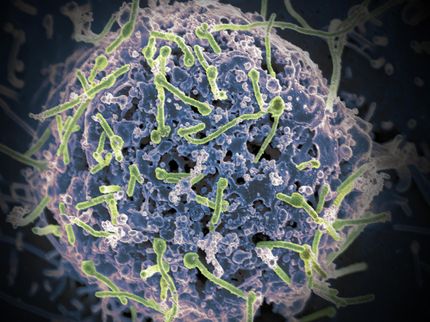Vaccination as simple as putting on lotion
Nanotechnology lets vaccines get into the body without a pinprick
Advertisement
According to usual technique, vaccines are introduced into the body by means of a needle. A search for alternative methods has been ongoing for a few years already for a number of reasons. Scientists of the Helmholtz Institute for Pharmaceutical Research Saarland (HIPS) and of the Helmholtz Centre for Infection Research (HZI), Braunschweig, Germany, recently showed that nano-technological formulations can indeed be used to administer vaccines via the skin. This might improve existing vaccination methods considerably. The results of the researchers are published in the scientific journal, "Nanomedicine".
Vaccination by injection, as done traditionally, has a number of drawbacks. These go beyond the fear of the needle, which might make some people shirk a vaccination, namely to the logistics involved in the production and application. "It is very laborious and expensive to produce such vaccines and trained personnel must be available to administer the vaccine," says Prof Claus-Michael Lehr, head of the "Active Substance Transport" department at the HIPS. "This is a real problem, especially in developing countries." For this reason, he and his colleagues at the HZI have been searching for new vaccination methods for some time.
They recently discovered that it is indeed feasible to introduce vaccines into the body via hair follicles, which are the anchors of hair in the skin, to elicit an immune response. For this purpose, the researchers use nano-particles as the packaging for the vaccines. These become deposited in skin folds and in the orifices of hair follicles and can penetrate through the skin in these places without injury to the skin. Since the follicles are not fully surrounded by callus, there is no barrier impeding the nano-transporters. This door is open.
However, in order to indeed elicit an immune response, a sufficient amount of the vaccine needs to get into the body. "This cannot be done using nano-particles," says Prof Carlos Alberto Guzman, head of the department of "Vaccinology and Applied Microbiology" at the HZI. "We managed to solve this problem by adding certain adjuvants, which were developed at the HZI, to the vaccine in the nano-transporters. These additives promote the immune response of the body." This allows the response to be elicited in the body although the amount of antigens would otherwise be insufficient.
"This shows that it is feasible to develop vaccines that can be applied without any injection," says Lehr. "In an ideal scenario in the future, we would simply apply some lotion and be vaccinated." Creams of this type would be produced significantly more cheaply and, especially, there would be no need to have trained personnel for effective application of these creams. Especially with a view to the control of epidemics in developing countries, like the current Ebola pandemic, this type of vaccine would mean major progress. Conceivably, this method can be applied not only for vaccinations as a protection from infectious diseases, but also for de-sensitisation therapy in allergic diseases.





















































